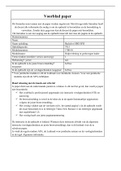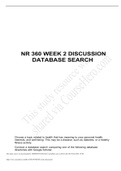Exam (elaborations)
Test Bank for Cardiopulmonary Anatomy and Physiology Essentials of Respiratory Care 7th Edition by Des Jardins
- Course
- Nursing
- Institution
- Midlands Technical College
Test Bank for Cardiopulmonary Anatomy and Physiology Essentials of Respiratory Care 7th Edition by Des Jardins Chapter 2 Ventilation MULTIPLE CHOICE 1. What instrument is used to measure P atm ? a. dynameter c. barometer b. altimeter d. hygrometer ANS: C Feedback A B C D A barometer i...
[Show more]











